RUSSELL WINTERBURN-PARETAUIRA HAPIMANA
SOLD
RUSSELL WINTERBURN-PARETAUIRA HAPIMANA
Oil on canvas framed size 480mm x 580mm $9950.00
(b.?- d. 1970,s)
Paretauira is typical of the last of the old-time Kuia who received the moko in the traditional way,
by the last of specialist Maori tattooists,’ the tohunga-ta-moko.’ The passing on of these
wonderful old Maori women in the 1970s closed an important chapter in the life of the early
Maori and was seen as a symbol for the passing of a whole way of life. In August 1971, sixteen of
the invited Moko Kuia came to Turangawaewae as guests of honour by the Maori Queen, Dame
Te Atairangikaahu, Marti Friedlander was allowed to come to photograph them gathered
together in the meeting house as they enjoyed themselves. They were led by Nohinohi Heu who
was the senior elder from Ngati Mahuta, the Queen’s own tribe. The Turangawaewae women,
the tangata whenua called the old Kuia onto their Kingite marae and as Michael King writes
‘Nohinohi was the first to appear up the narrow path and onto the marae proper. She was bent
double and had two sticks to walk, one in each hand, but she held her head up proudly and
fiercely, and looked from side to side as she edged her way across the marae she hadn’t set foot on
since Te Puea died twenty years before. With her were Ngakahikatea, Tiraha Cooper, Makere
Hose, Rangi Ruri, Hari Salmon, and a host of other women . . .’ Amongst this ‘host of other
women’ are several, such as Marara Maihi, whom I have had the greatest of pleasure painting.
The stories of a lot of these old Kuia Moko have been captivating, with some of their lives
reflecting in microcosm just how much history has not changed. Michael King reports that once
inside Mahinerangi, the same great meeting house in which I first met the Maori Queen, Dame
Atairangikaahu welcomed them and told them how they had come to be brought here, to be
together as the last remaining representatives of the Kuia Moko. Within a year of that meeting,
which King reports as being ‘a happy occasion’ half of those old Kuia were dead. Amongst them
was Paretauira Hapimana a member of the mighty Tainui iwi. When I had completed my first
painting of Pare Hapimana I showed it to Dame Te Atairangikaahu who recognised Paretauira
instantly and said that she had known the old Kuia Moko well. She told me how all the old Kuia
Moko had gathered together here at Turangawaewae and that it was a memorable occasion for
her, and no doubt for them all. I subsequently painted Dame Te Ata as a commission.
Paretauira was born in Gordonton in the 1880s and had her moko tattooed when she was twenty
years of age. “It was done with a needle”, she said. Her moko stained with an unusual dye mixed
by her Tohunga Ta Moko gave an uncommon greenish colour to the surface of Paretauira’s
golden skin. Pare recalled hearing the elders of her family talking on her marae at Hukanui
when she was a little girl. Tales were told of the Tainui canoe that bought all the ancestors of the
Waikato tribes to the shores around 1350. ‘The canoe landed at Whangaparoa, the old people
said, near Cape Runaway, and finally rested at Maketu Bay, Kawhia.’ ‘The canoe is buried there,
and there are two sacred rocks marking its length.’ It used to be shaded by a tapu grove of
manuka, but most of the trees are gone now.’ This new painting of Paretauira is a fresh attempt
to capture the mana of the beautiful Kuia. R.J Winterburn

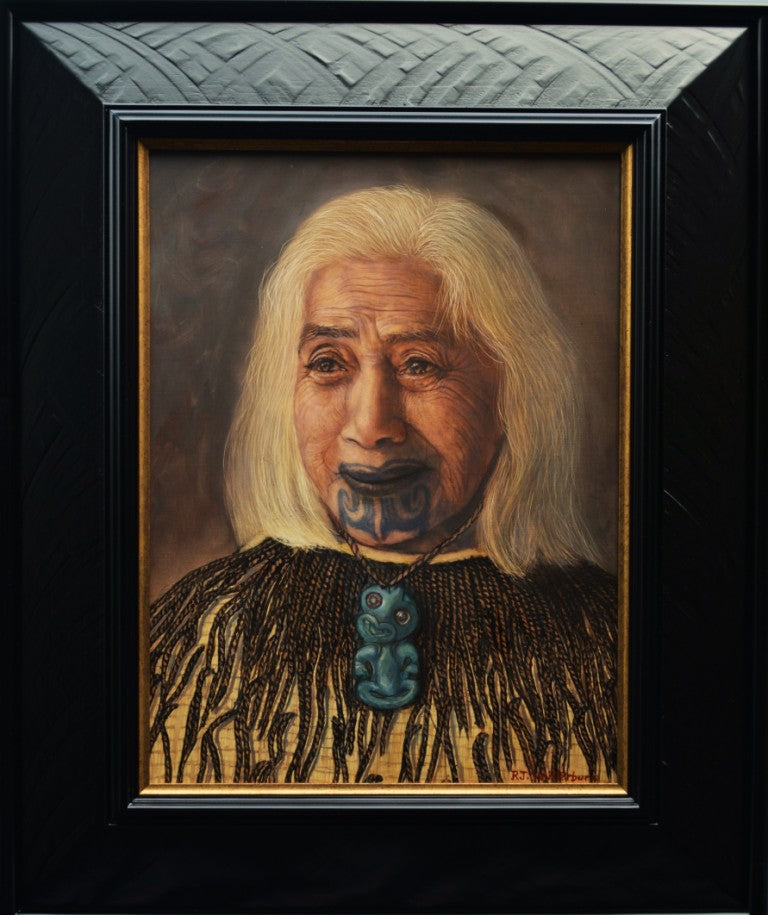


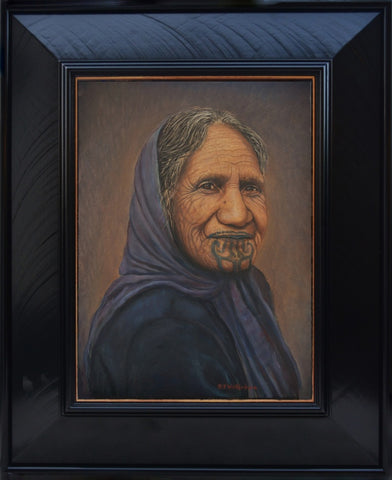
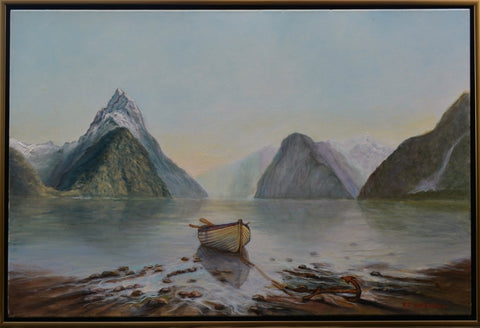

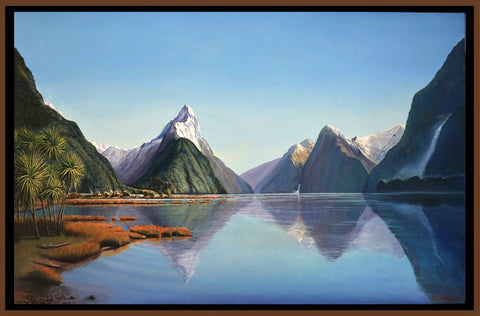
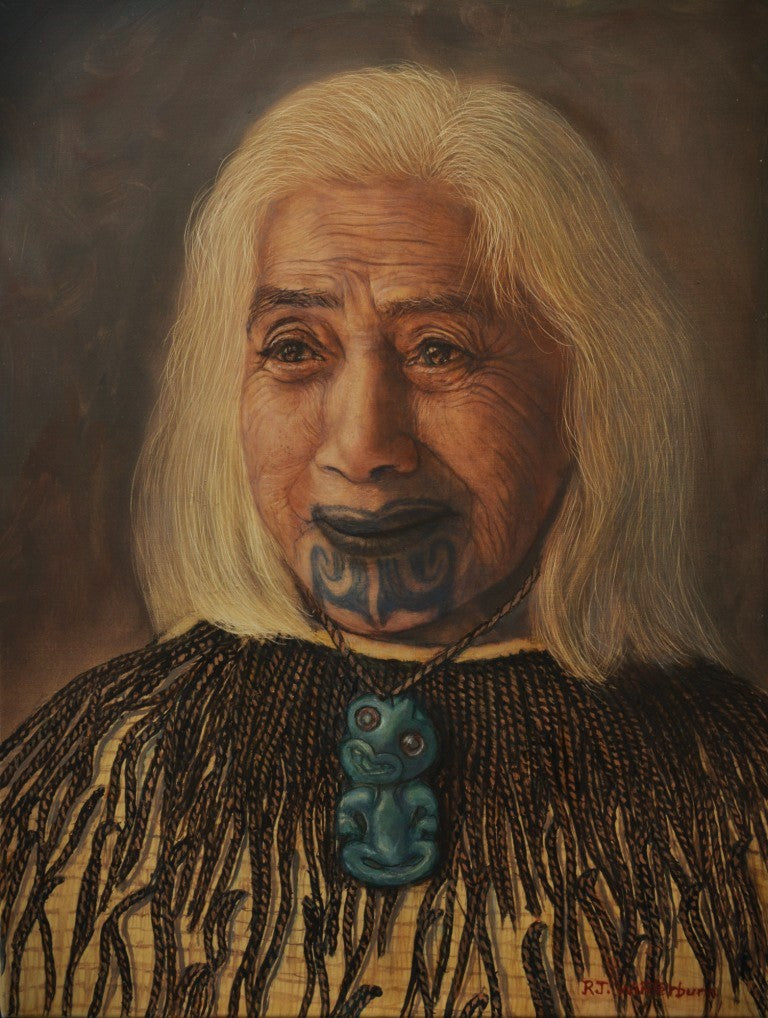
Share this item: